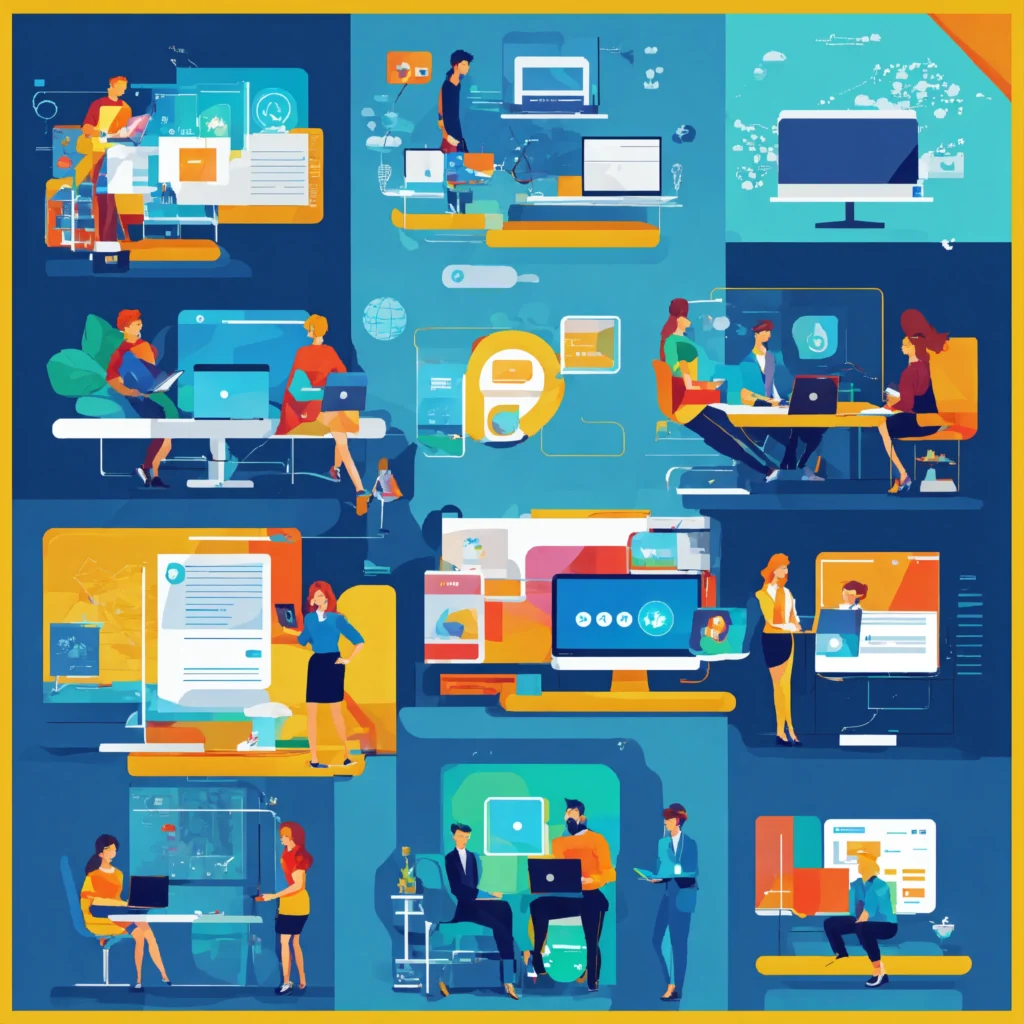AI-Driven Web Design Assistants
AI-driven web design assistants are revolutionizing the way websites are conceived, built, and optimized. By integrating artificial intelligence into the design process, these tools empower designers and businesses to create visually stunning, user-friendly websites with unprecedented speed, efficiency, and personalization.
AI-Driven Web Design Assistants
Wix ADI
Wix ADI (Artificial Design Intelligence) creates a professional website automatically based on your answers to a few questions.
Try Wix ADIBookmark AIDA
AIDA is Bookmark’s AI engine that builds fully functional websites in minutes using intelligent design automation.
Visit BookmarkFramer AI
Framer AI generates beautiful, fully responsive websites from text prompts using a visual-first, no-code editor.
Try Framer AIDurable
Durable builds websites in under a minute using AI — including content, layout, and CRM features, especially for freelancers and businesses.
Try DurableTeleportHQ
TeleportHQ allows developers to convert design mockups into responsive front-end code using AI-powered automation.
Explore TeleportHQFigma AI Plugins
Figma supports a wide range of AI design plugins that auto-generate UI elements, copy, wireframes, and color palettes.
Browse Figma PluginsHow AI Is Transforming Web Design
AI technologies are now essential in the web design landscape, streamlining workflows and enhancing creativity. Modern AI web design assistants leverage algorithms to automate repetitive tasks, generate design suggestions, and optimize user experiences based on real-time data and audience interactions.
Key Capabilities of AI Web Design Assistants
- Automated Website Creation: AI website builders like Wix ADI and 10Web generate complete website layouts, content, and color schemes based on user preferences, often from just a few prompts or answers to questions.
- Rapid Prototyping: Tools such as Framer AI and Uizard can turn text descriptions or hand-drawn sketches into interactive prototypes or production-ready interfaces in minutes, accelerating the design iteration process.
- Smart Content Generation: AI-powered platforms can write website copy, generate images, and suggest SEO-optimized headlines, improving both the creative and marketing aspects of web design.
- Code Assistance: AI coding assistants like GitHub Copilot and Fronty help developers by generating code from natural language prompts or images, reducing the time spent on manual coding tasks.
- Personalization and Optimization: AI analyzes user behavior and feedback to suggest design tweaks, color palettes, and layout changes that enhance engagement and conversion rates.
Integration with Popular Design Tools
AI is not limited to standalone builders. Integrations in industry-standard tools like Adobe Sensei and Canva AI bring advanced features—such as automated image resizing, intelligent cropping, and content-aware fill—directly into designers’ existing workflows, boosting productivity and creative potential.
Benefits for Designers and Businesses
- Efficiency: Automates time-consuming tasks, allowing designers to focus on high-level creativity and strategy.
- Accessibility: Lowers the barrier for non-experts to create professional websites, making digital presence more attainable for startups and small businesses.
- Customization: Offers a blend of AI-driven automation with human customization, ensuring each website retains a unique, branded feel.
- Collaboration: Facilitates teamwork with features for real-time prototyping and feedback, essential for modern, agile web development.
Responsible and Ethical Use
While AI-driven assistants greatly enhance capabilities, the human element remains crucial—especially for complex projects or enterprise-level sites. Designers must remain mindful of copyright, security, and ethical considerations, ensuring that AI tools are used responsibly and that final designs meet professional standards.
The Future of AI in Web Design
AI-driven web design assistants are set to become even more sophisticated, further blurring the line between automated convenience and human creativity. As these tools evolve, they will continue to empower designers to push the boundaries of what’s possible—delivering websites that are not only beautiful and functional but also deeply personalized and optimized for user engagement.
In summary, AI-driven web design assistants are transforming the digital landscape, making web creation faster, smarter, and more accessible than ever before.

